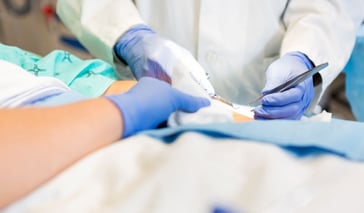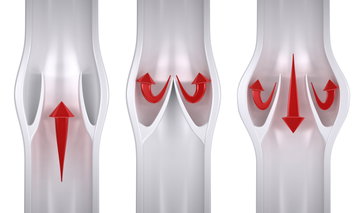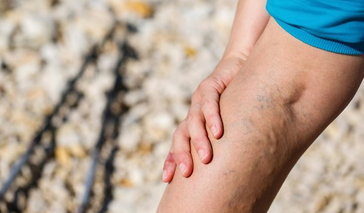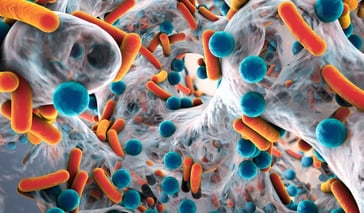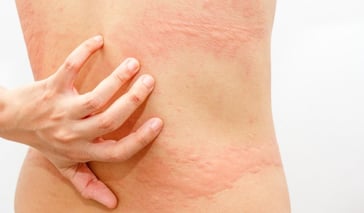Latest Articles About Wound Types
Non-Healing Surgical Wounds
As the name implies, nonhealing surgical wounds are wounds from surgical procedures which have not undergone the normal process of healing. The most common cause of a nonhealing surgical wound is wound infection. Continue Reading
Non-Healing Surgical Wounds
As the name implies, nonhealing surgical wounds are wounds from surgical procedures which have not undergone the normal process of healing. The most common cause of a nonhealing surgical wound is wound infection. Continue Reading
Traumatic Wounds
Traumatic wounds are typically defined as cuts, lacerations or puncture wounds which have caused damage to both the skin and underlying tissues. Acute wounds, cut wounds and penetrating wounds are the three categories that make up traumatic wounds. Continue Reading
Traumatic Wounds
Traumatic wounds are typically defined as cuts, lacerations or puncture wounds which have caused damage to both the skin and underlying tissues. Acute wounds, cut wounds and penetrating wounds are the three categories that make up traumatic wounds. Continue Reading
Pyoderma gangrenosum
Pyoderma gangrenosum is a rare disease, occurring in approximately one person per 100,000, which causes inflammation and ulceration of the skin. Its incidence is usually associated with systemic diseases in approximately 50 percent of patients. Continue Reading
Pyoderma gangrenosum
Pyoderma gangrenosum is a rare disease, occurring in approximately one person per 100,000, which causes inflammation and ulceration of the skin. Its incidence is usually associated with systemic diseases in approximately 50 percent of patients. Continue Reading
Ischemic Wounds
Ischemic wounds occur as a direct result of blocked blood flow to medium and small vascular beds in the body. This condition is called arterial insufficiency. Ischemic wounds are often found on the legs, feet and toes. Continue Reading
Ischemic Wounds
Ischemic wounds occur as a direct result of blocked blood flow to medium and small vascular beds in the body. This condition is called arterial insufficiency. Ischemic wounds are often found on the legs, feet and toes. Continue Reading
Soft Tissue Radionecrosis
Soft tissue radionecrosis (STRN) refers to the death (necrosi) of soft tissues as a result of exposure to ionizing radiation. It is a counterpart of osteoradionecrosis, which is the death of bone tissue due to radiation. Continue Reading
Soft Tissue Radionecrosis
Soft tissue radionecrosis (STRN) refers to the death (necrosi) of soft tissues as a result of exposure to ionizing radiation. It is a counterpart of osteoradionecrosis, which is the death of bone tissue due to radiation. Continue Reading
Varicose Veins
Varicose veins are enlarged or swollen veins in the legs, feet and other parts of the body. However, they are typically found in the lower limbs. This condition is characterized by blue or purple looking veins caused by a pooling or blockage of blood. Continue Reading
Varicose Veins
Varicose veins are enlarged or swollen veins in the legs, feet and other parts of the body. However, they are typically found in the lower limbs. This condition is characterized by blue or purple looking veins caused by a pooling or blockage of blood. Continue Reading
Pressure Ulcer
A pressure ulcer, also known as a bedsore or decubitus ulcer, is a wound of the skin caused by prolonged, unrelieved pressure to that area. The main cause is unrelieved pressure to a location of skin on the body. Continue Reading
Pressure Ulcer
A pressure ulcer, also known as a bedsore or decubitus ulcer, is a wound of the skin caused by prolonged, unrelieved pressure to that area. The main cause is unrelieved pressure to a location of skin on the body. Continue Reading
Biofilm-Infected Wounds
Biofilms in wounds are a form of infection that is made up of living microbes that are capable of forming colonies. They are generally composed of varied species of bacteria, fungi, yeasts, algae and cellular debris. Continue Reading
Biofilm-Infected Wounds
Biofilms in wounds are a form of infection that is made up of living microbes that are capable of forming colonies. They are generally composed of varied species of bacteria, fungi, yeasts, algae and cellular debris. Continue Reading
Necrotizing Fasciitis
Necrotizing fasciitis is a type of bacterial skin infection which predominantly affects the skin but may also expand to include the subcutaneous tissue, muscle and fat. Necrotizing fasciitis is often referred to as a flesh-eating bacterial infection. Continue Reading
Necrotizing Fasciitis
Necrotizing fasciitis is a type of bacterial skin infection which predominantly affects the skin but may also expand to include the subcutaneous tissue, muscle and fat. Necrotizing fasciitis is often referred to as a flesh-eating bacterial infection. Continue Reading
Osteoradionecrosis
Osteoradionecrosis (ORN) is a condition in which bone tissue dies as a result of radiation exposure. Normally, bone tissue is able to regenerate. It can occur spontaneously, but may be the result of an injury such as tooth extraction or oral surgery. Continue Reading
Osteoradionecrosis
Osteoradionecrosis (ORN) is a condition in which bone tissue dies as a result of radiation exposure. Normally, bone tissue is able to regenerate. It can occur spontaneously, but may be the result of an injury such as tooth extraction or oral surgery. Continue Reading

